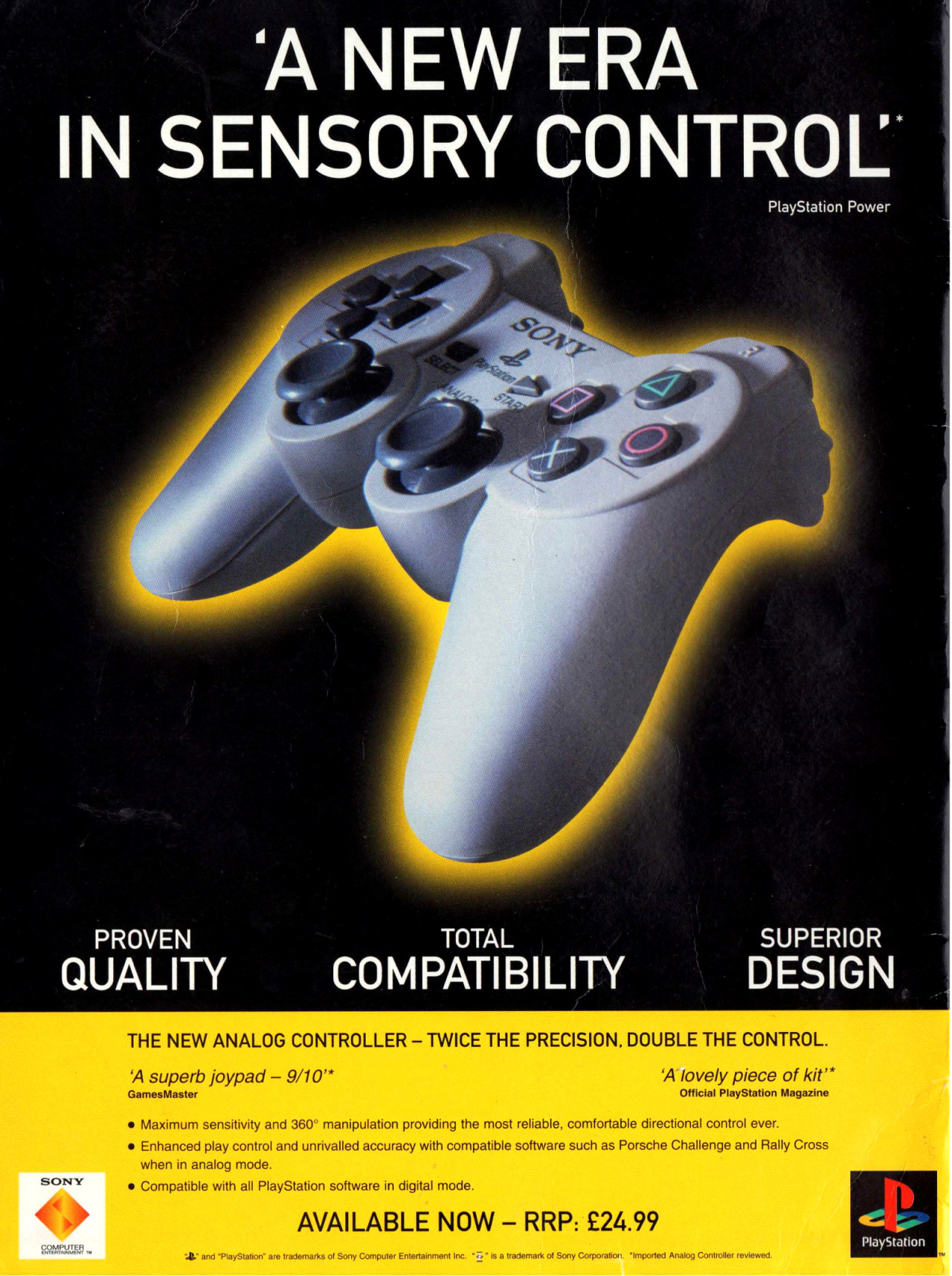The Birth of a Gaming Revolution: Sony's Original Analogue Controller
Sony's Original Analogue controller revolutionised gaming with precise analogue sticks and comfort, changing how we play.

In the annals of gaming history, some controller creations stand out as true game-changers.
When thinking of classic gaming controllers, the NES and SNES controllers are among the first to come to mind. The original PlayStation controller, sans analogue sticks, is renowned for its comfort, solid construction, and iconic status.
Hell, despite criticism directed at the N64 controller as being a bit of a design oddity, it holds a significant place in history for being released with the N64 some 11 months before Sony's Dual Analogue controller.
"Sony's Dual Analogue controller? What's that?"
If you don't remember it, fret not. Most only remember its newer, rumbling-featured brother - the Dual Shock. The Dual Analogue controller, however, debuted behind glass at the PlayStation Expo 96-97, a gaming event that took place from November 1st to November 4th, 1996.
Sony's Dual Analogue controller was eventually released for the original PlayStation in Japan, in April 1997, to rave reviews, and solidified its status as a game-changer, paving the way for dual stick analogue controller designs from Sony, and competitors.
When eventually released stateside, and in the EU, those rave reviews would continue.

Rumble for me, not for thee
In Japan, it hit the market concurrently with titles like Bushido Blade and Tobal 2. Touted as allowing for more precise and fluid control of the game's fighters, with the rumble feature contributing to a more realistic experience.
"Wait, rumble? I thought that feature wasn't added until the release of the Dual Shock?"
You read that right. The original Dual Analogue had rumble enabled for the Japanese market only. According to a Sony spokesperson, "We evaluated all the features and decided, for manufacturing reasons, that what was most important to gamers was the analogue feature." Reportedly, the decision to eliminate vibration feedback was driven by concerns that it might be associated with the early wear and tear of controllers.
An issue that seemingly didn't worry Sony later, as they released the Dual Shock not long after. The rumour mill continued to churn out reasons for the lack of rumble in the Dual Analogue, such as Nintendo's apparent attempt to block the release of the controller in North America due to the vibration feature's similarity to Nintendo's Rumble Pak.

Nintendo denied any legal action against Sony's controllers. Another theory for dropping the vibration feedback was Sony's goal to keep the controller's price affordable and maximise user adoption.
Whatever the reason, it would soon be forgotten with the release of the Dual Shock.
Ergonomics and Comfort
Sony's commitment to user comfort was evident with the design of the Analogue controller. The device featured a comfortable grip with contoured handholds, ensuring that players could enjoy extended gaming sessions without discomfort.
The button layout was intuitive, with the standard (and oh-so-iconic) PlayStation buttons (triangle, circle, cross, and square) easily accessible.

The addition of rubberised thumbsticks provided a secure grip and improved control. This was a welcome departure from earlier controllers, which often had hard plastic thumbsticks that could be slippery during intense gameplay. Great news for sweaty-handed people like myself.
The Analogue controller's design was all about making gaming more enjoyable and immersive, and its designer, Teiyu Goto along with Norio Ohga, knocked it out of the park.
Evolution of the DualShock
The success of the Analogue controller laid the foundation for the DualShock controller, right up to the PS5s Dual Sense today, incorporating force feedback technology, and enhancing the tactile gaming experience.
This innovation allowed players to feel vibrations corresponding to in-game actions, such as explosions or collisions, further blurring the line between the virtual and real worlds. It might seem rather silly, that a controller vibrating during actions in a game can add to immersion, but we know that to be true.

The DualShock controller also retained the Analogue controller's signature analogue sticks, ensuring a consistent and intuitive control scheme - but, unfortunately, dropped the concave design that wouldn't feature on a Sony controller until the PS4.
This controller would go on to become an industry standard, as evidenced by its huge legacy, influencing the design of controllers for other gaming platforms as well.
Legacy and Influence
The legacy of the original Analogue controller lives on in today's gaming landscape. While it has gone through several iterations and improvements, the concept of analogue sticks for precise character movement and camera control remains a fundamental part of modern gaming.
Gamers now take it for granted that their controllers will include analogue sticks, thanks in large part to Sony's innovative design. Again, let's not forget what Nintendo brought to the table as well.
Sony's original Analogue controller was a pivotal moment in gaming history. Its introduction of analogue sticks and commitment to user comfort set a new standard for controller design, transforming the way players interacted with their games.
This controller not only left an indelible mark on the gaming industry but also shaped the expectations of gamers worldwide. It's a testament to the power of innovative design in enhancing the gaming experience, and its influence continues to be felt in the controllers we use today.




Comments ()